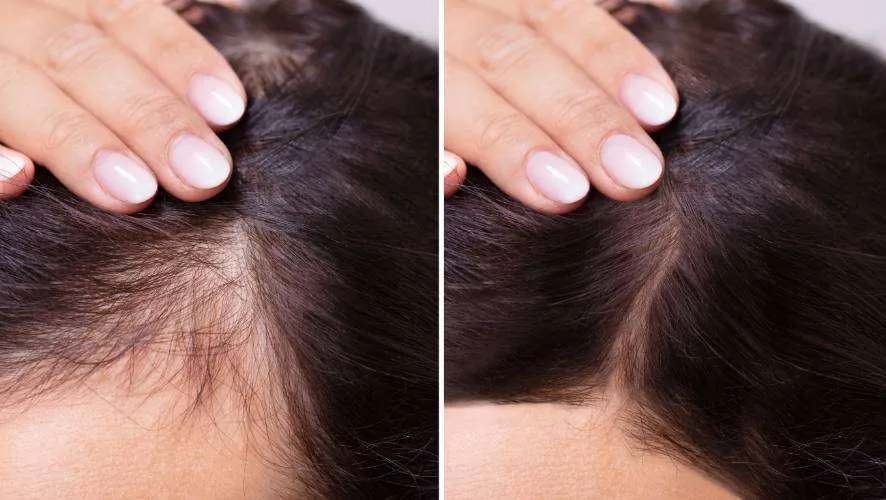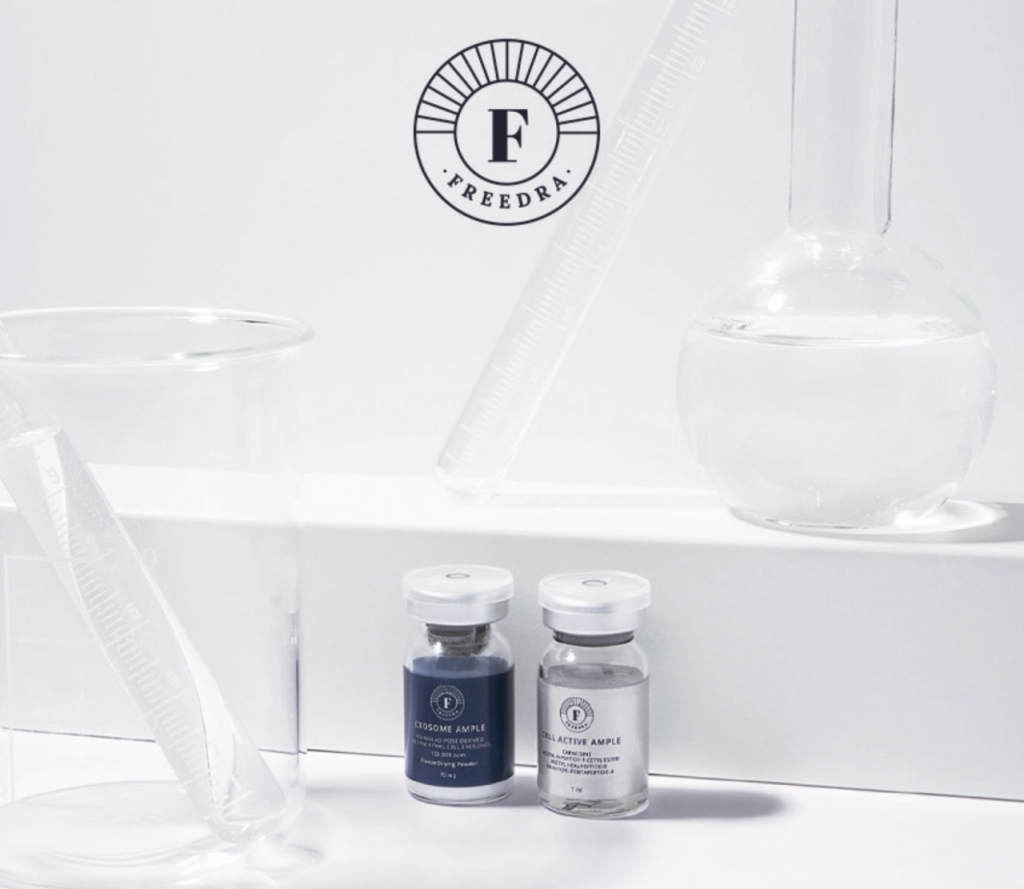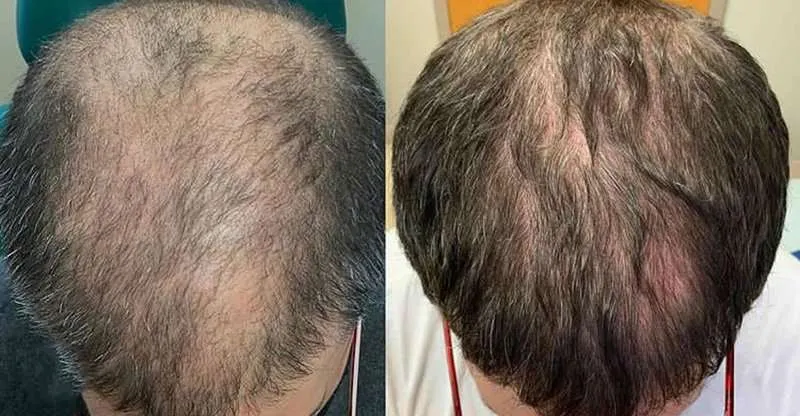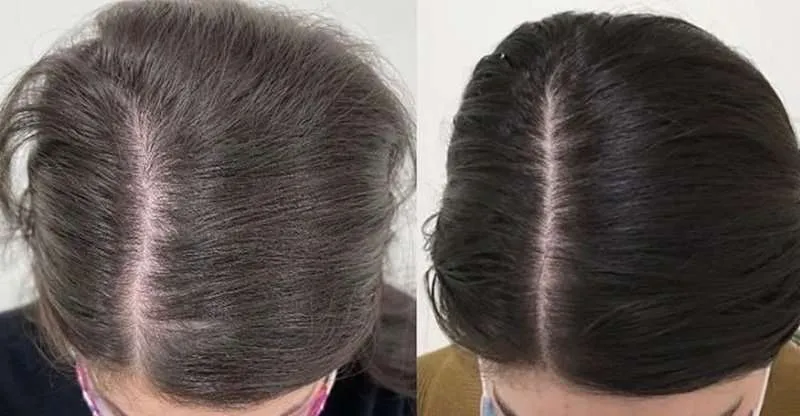In nature's embrace, secrets intertwine, With every breeze, your hair's rebirth entwined.
Exosomes hair loss treatment is advanced in stem cell therapy without using actual stem cells but by using ‘communicating vesicles’ to stimulate your own stem cells to release growth factors. They are less risky than actual stem cells as they can not trigger autoimmune or allergic reactions. They are such small particles that even through a small skin injury can penetrate the skin and work locally as well as systemically through the bloodstream.

Hair loss’s primary causes are androgenic alopecia and immune system-mediated reactions. The hair loses blood supply to follicles, shrinks, and dies, causing baldness.
Exosomes enhance communication between epithelial and dermal cells, which in turn release growth factors and stimulate follicles to accelerate growth, improve their capillary supply, and activates the hair cycle.
As exosomes have an effect on VEGF (vascular endothelial growth factor) they enlarge follicle size to promote the growth of thicker and stronger hairs, enhancing their growth cycle.


Effects on hair growth restoration:
- natural regeneration and activation of hair follicle growth
- repair tissues and revitalize the scalp through its multiple growth factors activation
- enhances hair growth cycle – hair follicles enter its anagen phase sooner to restart the production of new hair strands
- prolongs hair growing stage by delivering signals that continuously stimulate hair follicles to grow new hair
- delays the catagen phase where the hair stops growing
Hair stimulation by your own growth factors is a scientifically proven effective way to stimulate hair growth. However, it is short-lived and requires multiple sessions as growth factors are effective only a few weeks after injections.
They are especially helpful for early ages of hair loss, prevention, and rejuvenation.
The most advanced autologous stem cell therapy for hair and scalp activation. It has an established track record for effectively treating androgenic alopecia.
Downsides due to biopsy limitations to obtain stem cells the overall amount of stem cells is relatively small. In advanced hair loss, Regenera Activa requires a few sessions with the support of iPRF or PRP.
The most effective suggested combination is Regenera Activa enhancement by exosomes, in which way you enhance your own stem cell effectiveness. This is an advanced stem cell regenerative medicine field and studies are yet to come to prove its effectiveness.


Treatment Initiation:
Day 1: Administration of the secretome treatment, which is typically infused or applied directly to the scalp. This involves the use of secretomes derived from stem cells that are known to support tissue regeneration and repair.
Hair Growth Timeline:
First 30 Days: Initial signs of hair regrowth can be observed as the secretomes stimulate the hair follicles.
1-3 Months: Continued treatment leads to more noticeable hair growth as the follicles enter the anagen (growth) phase more robustly.
3-6 Months: Significant improvements in hair density and thickness can be seen as the new growth cycles establish.
Optimal Hormone Levels:
Estrogen and Progesterone: Balanced levels are crucial for maintaining hair growth and preventing hair loss, especially in women.
Testosterone: Although generally associated with male hair loss when converted to DHT (dihydrotestosterone), maintaining a proper balance can promote hair health.
Thyroid Hormones: Proper levels of thyroid hormones (T3 and T4) are essential as both hyperthyroidism and hypothyroidism can lead to hair loss.
Cortisol: Known as the stress hormone, high levels of cortisol can adversely affect hair growth, so managing stress and maintaining cortisol balance is crucial.
It’s important to consult with a medical professional to get precise hormone level assessments and follow-ups tailored to individual needs. They can provide a detailed plan based on specific hormone profiles and adapt the treatment to optimize the effectiveness of the secretome therapy for hair growth.
Diet:
Nutrient-Rich Foods: Consume a balanced diet rich in vitamins (A, C, D, E), minerals (iron, zinc, selenium), and omega-3 fatty acids which support hair growth.
Protein Intake: Ensure adequate protein intake, as hair follicles are mostly made of protein. Foods like fish, lean meats, eggs, and legumes are beneficial.
Hydration: Staying hydrated is crucial for maintaining the health of hair follicles.
Exercise: Regular physical activity can improve blood circulation, which helps nourish the scalp and hair follicles.
Stress Reduction: Activities like yoga or meditation can lower cortisol levels, reducing stress-related hair loss.
Hair Care: Gentle Handling: Avoid tight hairstyles, harsh chemical treatments, and excessive heat styling.
Proper Washing and Conditioning: Use gentle, sulfate-free shampoos and conditioners that do not strip hair of its natural oils.
Sleep: Adequate sleep is essential for overall health and can help regulate hormone levels, supporting hair growth.
Optimal Hormone Levels:
To maximize the benefits of secretome treatment for hair growth, certain hormone levels should be maintained:
Estrogen and Progesterone: Women: Balance is key to prevent hair thinning. Fluctuations during menopause can affect hair health, so hormone replacement therapy might be considered.
Optimal Levels: Typically, estrogen should dominate progesterone slightly, but the exact balance varies per individual.
Testosterone: Men: Lowering DHT levels (a derivative of testosterone) can prevent hair follicle miniaturization.
Optimal Levels: Keeping testosterone levels within the normal range while managing DHT through medications like finasteride or natural inhibitors.
Thyroid Hormones (T3 and T4): Both overactive and underactive thyroid can lead to hair loss.
Optimal Levels: Typically within the standard range of 0.4-4.0 mIU/L for TSH (Thyroid Stimulating Hormone), but individual adjustments may be necessary based on personal health conditions.
Cortisol: High stress levels can increase cortisol, which negatively impacts hair growth.
Optimal Levels: Maintain within the normal range, and use stress management techniques to keep it controlled.
Monitoring and Adjustments
Regular Check-Ups: Hormone levels should be monitored regularly through blood tests to ensure they remain within optimal ranges.
Adjustments Based on Feedback: Based on hair growth progress and hormonal tests, treatments such as adjustments in diet, lifestyle, or even hormonal therapy might be required.
